Sophie, My Springer Spaniel Puppy
Though my love of dogs had been lifelong, I had no idea that my beloved Sophie’s true caring of me during my frightening treatment for stage III Hodgkin’s lymphoma would be so life-affirming. Sophie was my protector and guardian, my champion, and my furry healer.
Like so many kids, when I was growing up, I immediately fell in love with all animals: elephants–particularly Morganneta, who lived at Forest Park Zoo in Springfield, Massachusetts–penguins, ponies, giraffes, you name it. But by far, my overall favorites were puppies. I had countless stuffed animals, with one of my most beloved being a yellow beanbag dog, not-so-creatively named “Floppy.” (Unfortunately, my younger sister also loved Floppy, so we often fought over him as little girls are wont to do.) I devoured the Great Creatures Large and Small series by James Harriot and decided that when I grew up, I would also become a veterinarian. (Of course, when I became older, I quickly learned that getting accepted into an accredited college of veterinary medicine was considered more difficult and more competitive than being accepted into many medical schools. Then there was the fact that if I did become a vet, I’d often have to cause discomfort, hurt, and pain when caring for animals to help them, whether with routine or emergency care.)
But fortunately, my family had a Springer Spaniel, named Tucker, when we were growing up, so I showered him with my puppy love. Tucker wasn’t the most intelligent dog, but he had a wonderful character and personality all his own. He patiently allowed my sister and me to dress him up in people’s clothes in various costumes and would do his best to stay still while we tried to figure out the best angle from which to photograph him.
This was also back in the day when most towns did not have leash laws, so he was constantly looking for trouble, and he always found it.
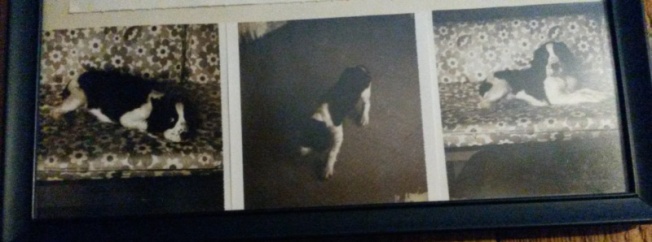
Photo by Peter Levine
He became famous in my neighborhood for all of his adventures. One of my first memories of Tucker was when he had been on prowl around the neighborhood for hours. Once he came home, my mother discovered that he was chewing something and seemed to be having difficulty. When she was finally able to get his mouth open (he was also quite stubborn), she discovered that he was chewing bright pink bubble gum! On another occasion, he arrived home carrying a prize of which he was obviously extremely proud–a full loaf of white bread (I believe it was “Wonder Bread”), still in its wrapper, albeit with quite a few tooth marks.
During another of his adventures, Tucker was gone for nearly a full day, and we were all getting worried about where he was. When he finally arrived, we learned that we were right to be worried. While presumably minding his own puppy business (or not), someone had practiced using a BB gun and had shot Tucker in his beautiful white belly. Fortunately, Tucker was truly fine, being the resilient young boy that he was–and we never did find out the scoundrel who would literally target a harmless puppy.
As an aside and as noted above, though Tucker was adorable and hilarious, he was not the sharpest puppy on the block. Years later, after getting married, we’d also had a terribly difficult time house-training our Springer Spaniels, Magpie, Daisy, and Molly–all of whom are shown in my Puppy Hall of Fame below. Just recently, during my Internet surfing, I came across a fun program that I wish had been available for Tucker and my family back in the day. “Brain Training For Dogs” is a new, funky–and some would say a tail-waggingly fun–dog training course. Developed by Adrienne Farricelli, a CPDT-KA certified dog trainer, it includes 21 creative, entertaining, and simple games for both you and your dog. The science behind the program to correct poor behaviors is known as “neuroplasticity,” which is a well-established idea that has been heavily researched by Harvard and other leading universities. Neuroplasticity in the human brain as well as the canine brain has been likened to “soft plastic”–i.e., the ability to mold and change new behaviors and habits. If you would like to learn more, click below for more details. 🙂
Sometimes, Tucker’s sense of adventure combined with his somewhat limited intelligence landed him in serious trouble. The scariest “adventure” that Tucker had is one that I truly wish I could forget. My father loved boating, and on the weekends, he would bring my mother, we kids, and sometimes Tucker to the shore in Connecticut. We’d then board our powerboat and spend the day on Long Island Sound, dodging other powerboats’ wakes and trying to slow down enough to make smaller wakes when approaching sailboats. One summer day, we’d had a great day together on the water, but it was time to head back to the marina where our boat was docked.

But that day, something terrifying occurred. The tide was such that our boat was a bit lower than the landing dock where my father wanted to drop all of us off before mooring the boat. My mother was the first to step up onto the dock, and she and my father helped us up. My father then picked up Tucker and started to lift him higher, so that my mother could reach him. But Tucker was feisty, and the next thing that we knew, Tucker had fallen out of my parents’ arms and was suddenly in the water below, struggling to dog paddle his way back.
My sister and I immediately became hysterical, screaming for my parents to do something. But the harder that Tucker paddled, the more quickly the current seemed to carry him away. My father shouted to us that we should run as fast as we could to alert the owner of the marina and to get his help. Fortunately, the owner was there and somehow understood what my sister and I were saying between our tears and gasps for breath. Thank God that my father and the marina’s owner were able to quickly catch up with Tucker by boat, lift a very scared puppy into the boat, and bring him safely ashore.
The wonderful news is that Tucker mellowed with age and, though he stopped having such exciting adventures, he loved nothing more than lying on his back in the middle of the hallway to our bedrooms, waiting for more tender petting.
Enter Sweet Sophie
When I was away at Connecticut College, my family received an absolutely wonderful gift. My parents had recently moved to a different town on the Connecticut shore, purchasing a beautiful home right on the water. The previous owner lived right next door. As a welcoming gift, knowing that our family absolutely loved dogs, particularly Springer Spaniels, the owner came over one day carrying a tiny puppy and gently placed her in my mother’s arms. She was an eight-week-old Springer Spaniel puppy, and she immediately became a treasured member of our family. Miraculously, we all agreed that the name Sophie was perfect for such a sweet, loving, gentle little girl. When I came home from college, met her for the first time, and held her in my arms, I was nearly in tears. I was immediately in love, and to my delight, she fell in love with me in that same moment. She loved and adored everyone in my family–and frankly anyone she met–but I was the blessed one who became “Sophie’s person.”
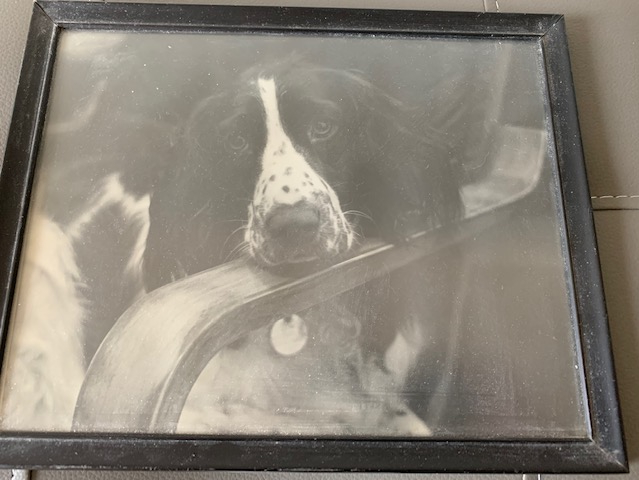
Photo by Peter Levine
She was the perfect dog. She was absolutely adorable in everything she did. Her only “fault,” which is a normal part of being a puppy of course, was her tendency to pee on the floor whenever she was excited to see someone. In other words, every time I visited home from college, I was greeted by an adorable little tail wagging at hummingbird speed, followed by a slowly spreading yellow puddle on the kitchen floor. I was not the only one who was completely in love. I used to tease my father that Sophie was his favorite daughter, because he used to carry her around the house in his arms–something that when we were children, he rarely did with me and my sister, because, let’s face it, we were cranky, fussy babies. 🙂
In Trouble: My adult life choices had to be put on hold
When I graduated from college, I moved back home with my parents and Sophie. (My sister was still in college at the time.) For the past year and a half during my junior and senior years, I had been experiencing troubling symptoms and desperately trying to find the cause. I was constantly coughing, so much so that it was often difficult to stop; lost a tremendous amount of weight; was uncomfortable in my own skin, feeling itchy all over; was constantly exhausted; and was experiencing severe night sweats–all of which I later learned were “classic” symptoms suggesting Hodgkin’s lymphoma.
I was hired as a feature writer for a local newspaper, but felt that I had to obtain answers before even considering moving out and being on my own. About six months after I’d moved back home, I was getting ready for work, had just finished taking a shower, and proceeded to have the worst coughing attack I’d ever had. I literally could not catch my breath. My father started knocking on the bathroom door, saying “Please come out here right now!” After I finally managed to stop coughing and had gotten dressed, I stepped into the hallway, and my father said, “That’s it! There is no way that you’re going to work today. Something is desperately wrong here, and we are going to a doctor right NOW to insist that you get a chest x-ray. I can’t believe that not one of the doctors you’ve seen has ordered a simple chest x-ray!” Everyone in my house was understandably upset and frantic, including poor Sophie, who didn’t appear to comprehend what was going on and seemed unnerved as well. I later learned directly from Sophie herself that I was probably wrong about the former: she ultimately seemed to have a very deep understanding that I was extremely ill.
Fast forward a few hours later, and I was sitting in the doctor’s office, looking at an x-ray of my lungs on the light box (this was back in the 80s, so I know that I’m seriously dating myself ). And I immediately knew that something was terribly wrong. One of my lungs appeared in black (which is normal), but the other lung appeared nearly covered in white (definitely not normal). The immediate fear was that this may be cancer, but that wouldn’t be certain until I had a biopsy.
The next several days were a complete blur. I believe that it was the very next day when I met with a thoracic surgeon, and I was scheduled for a surgical biopsy at the Hospital of St. Raphael in New Haven, CT. I underwent my biopsy and waited for my results in a single hospital room in the cardiovascular wing. All of my fellow patients were awaiting or recovering from cardiothoracic surgery and were decades older than I was. When I was encouraged to get out of bed and start walking around the unit with my IV pole, most of the other patients became used to my passing their rooms again and again, and many of them started up conversations with me. We quickly became caring friends, serving as a support group for one another. One patient was scheduled for coronary bypass surgery a few days before I was discharged. I remember repeatedly walking by his room, becoming more and more anxious, praying that his surgery was going well. Finally, he was brought back to his room, and while I stood by his bedside, though he was extremely groggy, I remember how relieved I was when he opened his eyes and smiled, happy to see me.
I missed my parents terribly despite the fact that they visited as much as they could. But I was extremely upset that I couldn’t see Sophie. I knew that seeing her face would immediately help me to begin my healing process.
Fortunately, the nurses at St. Raphael’s were absolutely wonderful, and most of them were just a few years older than I. For the several days that I remained in the hospital, many of them began not just to provide their nursing care, but to visit and keep me company. My care at the hospital could not have been better, and once I returned home, I wrote a letter to the nurses, thanking them for everything they did for me during such a scary time for me and my family.
As I was being cared for so well at the hospital and forming friendships with my fellow patients, I later learned that my parents were terrified, waiting for the results of my biopsy and praying that my diagnosis was not lung cancer. When the news finally came, my parents both breathed sighs of relief. I know that it sounds strange to consider any cancer diagnosis a “good” one, but my prognosis would have been much more grave should it have been lung cancer. My new oncologist immediately explained to us that “Hodgkin’s lymphoma is one of the more favorable diagnoses, because it is much more treatable than other cancers.” I was grateful for that, but also learned the troubling news that I had late-stage IIIB Hodgkin’s lymphoma with extremely bulky disease. Hodgkin’s lymphoma that is characterized by “bulky disease” means that the tumors in the chest are at least ⅓ as wide as the chest or that tumors in other areas of the body are at least 4 inches.
I also had characteristic “B symptoms,” including drenching night sweats, severe exhaustion, loss of more than 10% of my body weight over the last six months (without dieting), and fever of at least 100.4°F. In addition, I had less common symptoms known to be associated with Hodgkin’s, including severe itchiness of the skin without a rash and deep, ongoing coughing. (Researchers suggest that persistent itching seen with Hodgkin’s is caused by cytokines, which are chemicals released by the immune system in response to lymphoma, resulting in irritation to nerve endings in the skin.) Further, during my biopsy, the surgeon discovered that one of my lungs had collapsed due to the tumors.
However, I did not have what is considered the “hallmark symptom” of Hodgkin’s, which is painless swelling in the lymph nodes in the neck, underarms, or groin. I was told that that was the primary reason why there was such a delay in my diagnosis. (One would think that the classic B symptoms that I had experienced for well over a year would have thrown up a red flag, immediately suggesting Hodgkin’s lymphoma, but that is a blog for another day.)
So having bulky disease with B symptoms meant that my lymphoma was very advanced, and my oncologist recommended intensive treatment, which was extremely difficult for patients but considered crucial at that time.
The year was 1987, and the standard protocol for late-stage Hodgkin’s disease was high-dose radiation and chemotherapy, including Adriamycin (doxorubicin), a drug that is now known to potentially cause cardiac effects. Technically, I was treated with two different combinations of chemotherapy, one called MOPP and the second known as ABVD. I would receive MOPP first (i.e., mechlorethamine, vincristine, procarbazine, and prednisone), have two weeks to recover, and then if my blood counts were not too low, I’d receive ABVD (doxorubicin, bleomycin, vinblastine, and dacarbazine). After two weeks, the next cycle would begin. I was originally scheduled to undergo six cycles. Once I was finally done with chemotherapy, I would next undergo mantle-field radiation therapy (again, standard treatment for patients with massive mediastinal lymphoma).
The primary goal at that time had to be enabling patients to go into remission, since if those with Hodgkin’s disease recurred, they had much fewer options for successful treatment and a much higher risk of mortality. Yet in the decades since, though many of us treated with these aggressive therapy protocols were fortunate enough to go into remission, we have also gone on to develop serious late effects, such as cardiotoxicity and a second cancer due to their cancer treatment years or decades earlier.
But where does Sophie come into all of this?
Sophie to the Rescue
I’ll never forget my first chemotherapy session with MOPP. When I walked into my oncologist’s office, I saw that there was a small bathroom on the right. It had a very distinctive smell of disinfectant (after my first few chemotherapy treatments, I’d walk by that bathroom and instantly feel completely nauseated, triggered by that smell). One of the oncology nurses brought me into a tiny room to take a blood draw. Once they determined that my blood levels were appropriate for treatment, the nurse led me to one of their infusion rooms. The MOPP regimen was considered “easier” than the ABVD regimen, since the latter included what many cancer patients refer to as the “red devil,” Adriamycin. The drug is bright red, delivered intravenously, and so caustic that it causes serious burns if it touches the skin.
After my MOPP infusion was completed, I had to go for a scan that my oncologist had scheduled. I had to stay completely still, so that there were no artifacts on the images. I soon began to feel horribly nauseated, and as the clock kept ticking, I was terrified that I was going be sick and have to start the scan all over again. Thank goodness that I finally got through the scan without that happening. I then had to wait another 30 minutes or so for one more scan, so my mother wheeled me to the hospital cafeteria. I had taken an oral Compazine (an antinausea drug) about receiving my chemotherapy infusion. But it ultimately did absolutely nothing to reduce my nausea: it only resulted in my exhaustion. We sat at a table in the middle of the cafeteria, surrounded by physicians. Literally seconds after we had settled, I began to gag, and my mother swiftly positioned the emesis basin she had obtained from one of the oncology nurses, and there you go–the beginning of the terrible journey that one had to take in the 1980s when we did not have the benefits of today’s powerful, effective, antinausea medications.
The drive home from the hospital in New Haven was an awful one. It was rush hour, the traffic on I-95 was worse than usual, and I spent the entire ride home vomiting. When we finally reached home, there she was: Sophie, my baby. I suspect that was the first time I’d smiled since this entire nightmare began. Because she was still a puppy, she was in her crate (which she loved as her own, cozy place), and when my mother opened the door, Sophie immediately bounded out, started licking my face, giving me her sweet puppy kisses over and over again, and jumping up to welcome me back. She closely followed me up the stairs (a skill she had only recently acquired) and waited patiently outside the bathroom as I vomited once again.
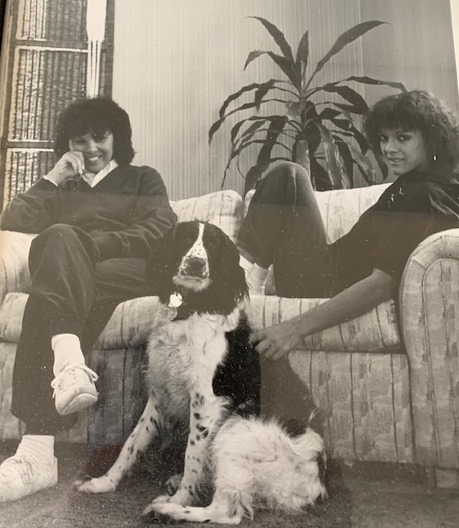
Photo by Peter Levine
She was right behind me as I headed to my bedroom and, as I gingerly climbed into bed, Sophie did something she had never done before. I had a stuffed dog that sat on my headboard, and she jumped up on my bed, took the stuffed animal gently in her mouth, and jumped back onto the floor. She then pulled herself under my bed, lying directly beneath me, and began to gently knead the stuffed dog with her paws, back and forth, back and forth. Periodically, I’d have to pull myself out of bed and race to the bathroom for another round of vomiting. Sophie would always be right behind me, waiting outside the bathroom, and she would then escort me back to bed. Finally, the Compazine would enable me to drift off to sleep.
When I finally woke up in the late afternoon and made my way down the stairs, again with Sophie at my heels, my mother said that she had something absolutely amazing to share with me. She said that she had periodically come upstairs to check on me, and each time, she found Sophie on the bed with me, hovering over me. She had her front paws on either side of me, and she was reaching her head toward mine as closely as she could, almost as if she were checking to ensure I was breathing. She was utterly still and remained in that position for a few minutes until she was reassured that I was okay. When she noticed my mother standing at the door outside my bedroom, she would then jump onto the floor, gently take the stuffed dog in her mouth again, scoot beneath my bed where she had been before, and once again began to knead the stuffed dog with her front paws over and over, continuing to hold vigil over me.
And this became Sophie’s pattern. Every time that I returned home after receiving chemotherapy, she would literally watch over me and do her best to protect me while she guarded me both over and beneath my bed. Those days would be the only times that she would stay with me for hours and hours on and beneath my bed. And she did not once reach for my stuffed animal except on those days.
I never had seen anything like this in my life. I felt so cared for, loved, and protected by this sweet, kind-hearted puppy. I’ve had several Springer Spaniels in my life thus far and continue to love each and every one of them, with all of their very distinct personalities. (Please see all my babies at the end of this blog.) But I had an extremely special, unique, lifelong bond with Sophie, consider her my special puppy angel, and feel that she continues to watch over me from her spot on The Rainbow Bridge:
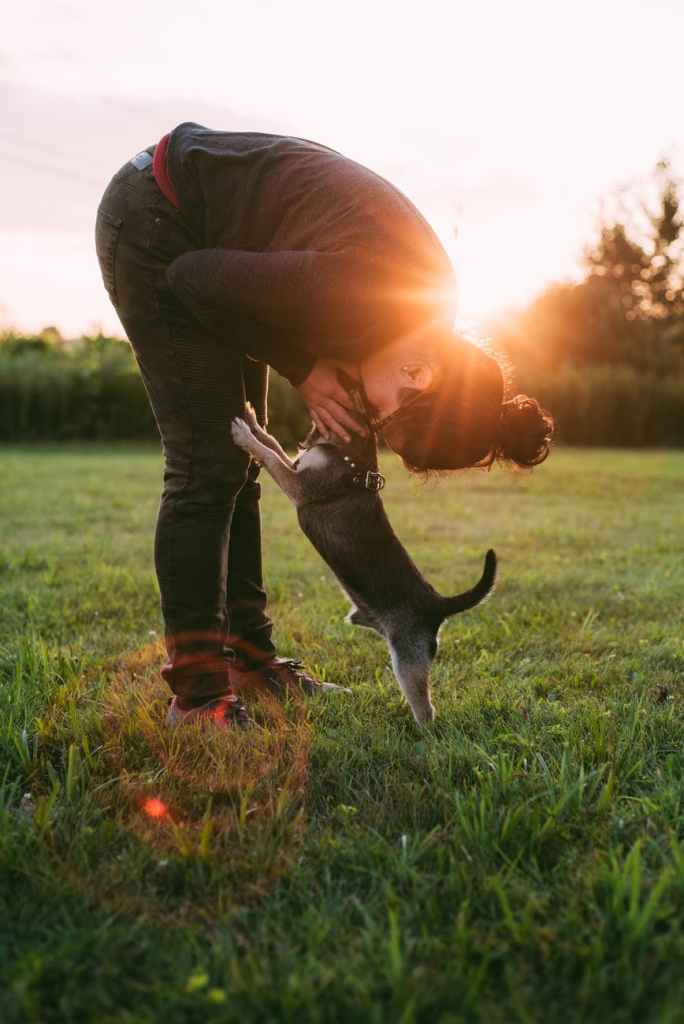
“Just this side of heaven is a place called Rainbow Bridge.
“When an animal dies that has been especially close to someone here, that pet goes to Rainbow Bridge. There are meadows and hills for all of our special friends so they can run and play together. There is plenty of food, water, and sunshine, and our friends are warm and comfortable.
“All the animals who had been ill and old are restored to health and vigor. Those who were hurt or maimed are made whole and strong again, just as we remember them in our dreams of days and times gone by. The animals are happy and content, except for one small thing; they each miss someone very special to them, who had to be left behind.
“They all run and play together, but the day comes when one suddenly stops and looks into the distance. His bright eyes are intent. His eager body quivers. Suddenly he begins to run from the group, flying over the green grass, his legs carrying him faster and faster.
“You have been spotted, and when you and your special friend finally meet, you cling together in joyous reunion, never to be parted again. The happy kisses rain upon your face; your hands again caress the beloved head, and you look once more into the trusting eyes of your pet, so long gone from your life but never absent from your heart.
“Then you cross Rainbow Bridge together….“
~Author unknown…
Puppy Hall of Fame

Photo by Peter Levine

Photo by Peter Levine

Photo by Deb Madden

Photo by Deb Madden
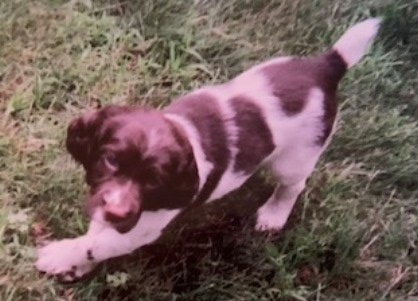
Photo by Deb Madden
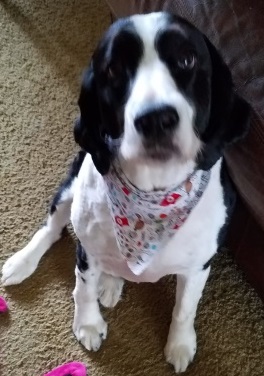
Photo by Deb Madden
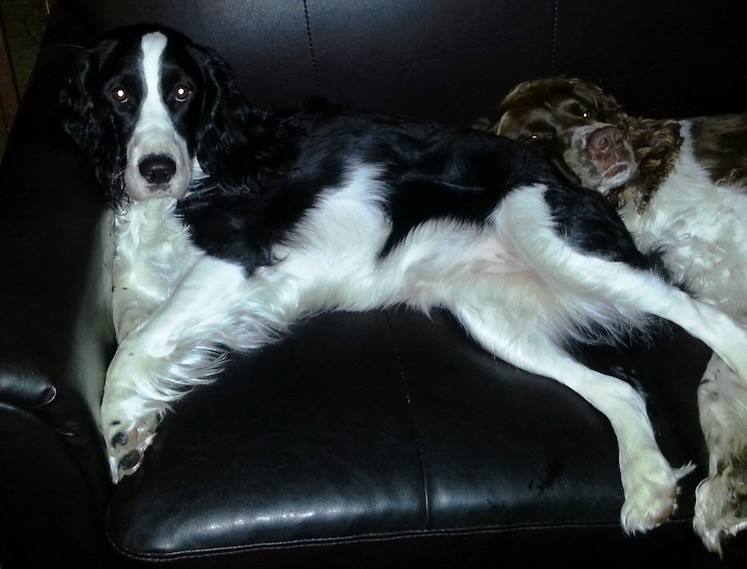
Photo by Deb Madden

